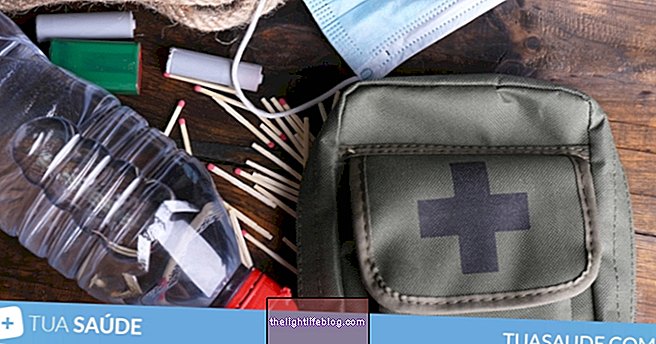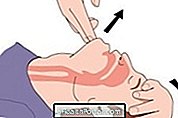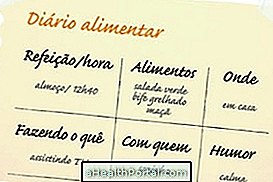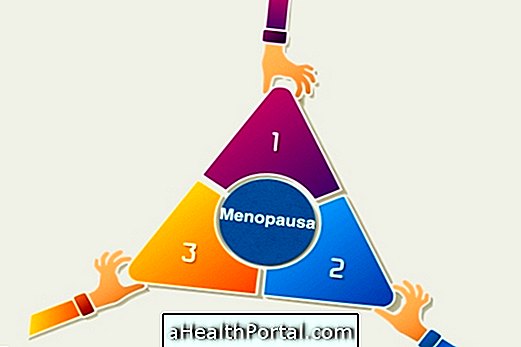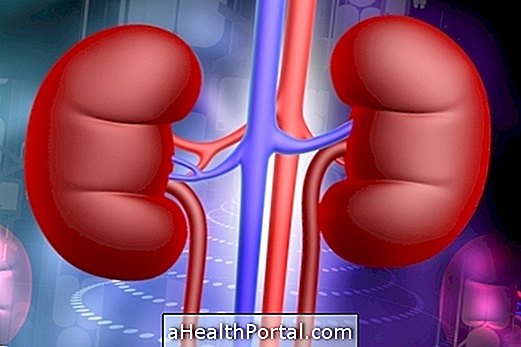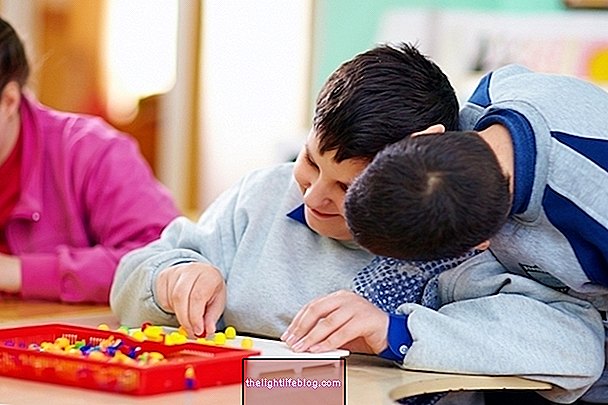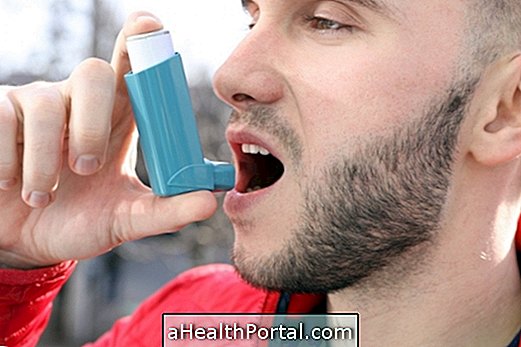In case of drowning it is necessary to call a lifeguard or firefighter to remove the victim from the water and provide first aid as soon as it arrives on dry land to withdraw water from the lungs and restore breathing.
However, care must be taken to remove the victim from the water to ensure their own safety, because if the victim is very desperate he may try to climb up on his back, stopping his breathing and you may drown. Thus, the ideal is only to approach the victim if you are a great swimmer and if you have any object that floats like a float, vest or surfboard so that the victim can hold and are both safely.
After removing the victim from the water it is necessary to:
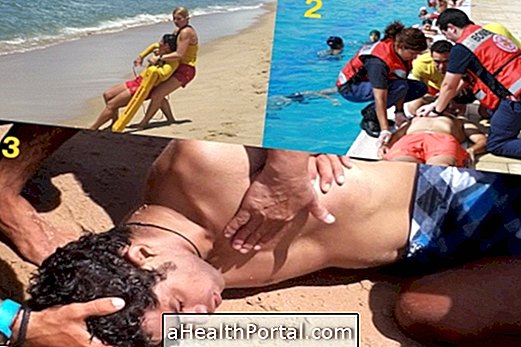
- If the victim is unconscious and does not breathe, immediately start mouth-to-mouth breathing and cardiac massage until the victim breathes again, as shown in figure 2;
- Turn the victim's head and body to the side so that she can expel the ingested water, as shown in figure 3;
- Remove wet clothing and warm the victim with warm blankets or bags;
- Wait for the arrival of the ambulance and medical help.
The victim usually has a weak pulse, loss of consciousness, and a drop in temperature. May have bluish or extremely pale skin.
See too:
- How to do mouth-to-mouth resuscitation
- How To Make Heart Massage
Secondary drowning
After a drowning or 'near-drowning' the victim should be seen by doctors in a hospital because water can enter the lungs and cause a drowning even 3 days after the water accident. Signs that may indicate dry drowning include chest pain, drowsiness, and shortness of breath. Look at all the symptoms and what to do in this case: Did you know that it is possible to drown even without being in the water?
What to do to avoid drowning
To avoid drowning it is recommended to only swim or bathe in shallow water and always in areas guarded by a firefighter or lifeguard. It is also important not to try to swim after eating or drinking alcohol, or after being exposed to the sun for a long time, especially if your body is warm and the water temperature is very cold because it favors muscle cramps that can make it harder to move inside the body. water, increasing the risk of drowning.
Babies and children, even if they can swim, should only be in the water accompanied by an adult who is alert to them and should not remain on dangerous beaches with high tide or large waves. If you are going for a boat or jet ski you should always wear a life jacket that is completely full and suitable for your size. Buoys may be helpful, but children still need the supervision of an adult.
Learning to swim is a good strategy to avoid drowning, but the risk of drowning is greater for people who know how to swim or who think they can swim than for those who are so afraid of water that they can not even get close to it. even people who swim very well may drown due to fatigue, cramps, head trauma in the water or other health problems like stroke or stroke, for example.
And so it is recommended to take all precautionary measures to protect yourself from drowning.



